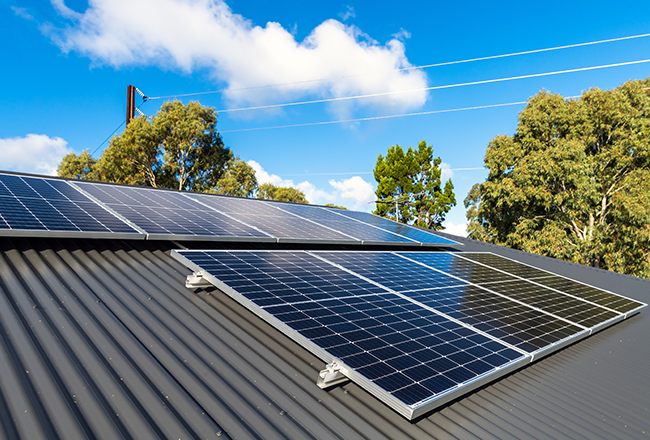What Millennials can do now to prepare for homeownership
Research shows that over ⅓ of the Millennial generation, ages 18 to 31, either still live with or have moved back in with their parents. That indicates a sizable portion of the homebuying market is currently sitting it out on the sidelines. But that doesn’t mean Millennials can’t begin preparing for homeownership. In fact, with Mom and Dad providing some financial shelter, many might find themselves at a unique advantage for paving a successful path to becoming a first-time homebuyer once they decide to leave the nest for good. Get started with these helpful tips.

Step 1: Build a healthy credit score—essential for qualifying for a good home loan
A shipshape credit score unlocks many financial doors, while a poor score erects barriers. Follow these guidelines to head your credit in the right direction.
- First things first. Obtain a free copy of your credit report. This will alert you to any negative flags that may have cropped up due to late payments, unpaid bills, errors or as a result of being the victim of identity theft. Once you know the state of your credit, you can then take appropriate measures to achieve or maintain the best possible score. You may also obtain your actual credit score for a fee.
- Dispute any negative alerts on your credit report that you believe to be in error. Companies sometimes supply inaccurate or out-of-date information to credit bureaus, and other times erroneous information can result from identity theft. Dispute any errors with the credit reporting companies and the companies that supplied the information. The US government’s consumer finance website offers guidance on how to get started.
- If you don’t already have one, consider opening a line of revolving credit. The most common and simple method of doing this is to get a credit card. Establishing a history of credit is necessary to achieving your ideal credit score.
- Make regular credit card charges that you promptly pay off and are never late paying. This demonstrates that you can maintain a healthy line of revolving credit without overleveraging yourself or exhibiting risky spending behavior. To stay clear of pitfalls, make it a rule to only use your credit card when you have the immediate cash to pay it off.
- Don’t close existing lines of credit, and occasionally charge small amounts to each credit card you have in order to prevent creditors from closing them for lack of use. The reason? The longer you maintain active, healthy lines of credit, the more they boost your credit score. Closing them may actually decrease your credit score by lowering your overall credit limit.
Step 2: Carefully file your tax forms, rental history documentation and any relevant proof of income
Keep forms documenting proof of income and tax history. It is also wise for first-time buyers to file documentation of your rental history. These records will come in handy when applying for a home loan down the road.
- Make a habit of carefully organizing and maintaining files of past filed tax returns. The general rule is to save tax returns for at least six years, but in some cases the IRS recommends holding on to returns indefinitely.
- Save your pay stubs. The recommendation is to have at least the last month’s pay stub handy. Some companies allow you to access a company database to print past paychecks.
- You’ll also want to keep at least the last month’s bank statements on hand to help document your net worth.
- If you’ve lived on your own as a renter before, save documentation showing that you paid your rent on time. Ideally, try and shoot for the last 12 months of rent checks.
Step 3: Begin saving for a down payment
The amount you’ll ultimately need to save for a down payment can vary greatly. With mortgage insurance, you might qualify for as low as 3.5% down with an FHA loan, or even as low as 3% down with a conventional loan. And it may even be possible to have no down payment at all through other government-insured options if you qualify for VA or USDA loans, or if you qualify for assistance from special homeownership programs.
While you may not know the exact amount or percentage you’ll ultimately need to save, you do know that you need to save something. So the most important thing is to start saving what you can today. One simple approach is to set up an automatic transfer of whatever funds you can afford into a savings account each month.
Step 4: Make a budget
Make a detailed budget outlining current income and expenses to help you understand what you could afford to spend on a monthly mortgage payment. Make sure to consider less-talked-about homeownership expenses, such as home insurance, HOA fees and maintenance.
Interested in more tips to prepare for homeownership? Check out our FREE guides!
First-time Homebuyer Guide »
8 Credit Score Management Tips »
Mom and Dad, if the kids moved back home and living space feels crowded, check out our blog on multi-generational floor plans.



